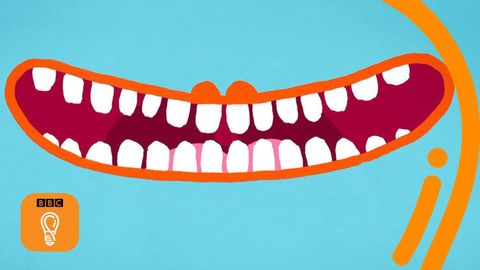關於牙齒的一些有趣和怪異的事實 - BBC Ideas (Some fun and freaky facts about teeth | BBC Ideas)
Summer 發佈於 2020 年 11 月 19 日  沒有此條件下的單字
沒有此條件下的單字US /əbˈsɛʃən, ɑb-/
・
UK /əb'seʃn/
US /ˈævərɪdʒ, ˈævrɪdʒ/
・
UK /'ævərɪdʒ/
- n. (c./u.)平均
- v.t.算出...的平均數
- adj.平均的;一般的,通常的;中等的
- v.i.趨向
- v.t.照料;照顧
- v.t./i.傾向;趨向
